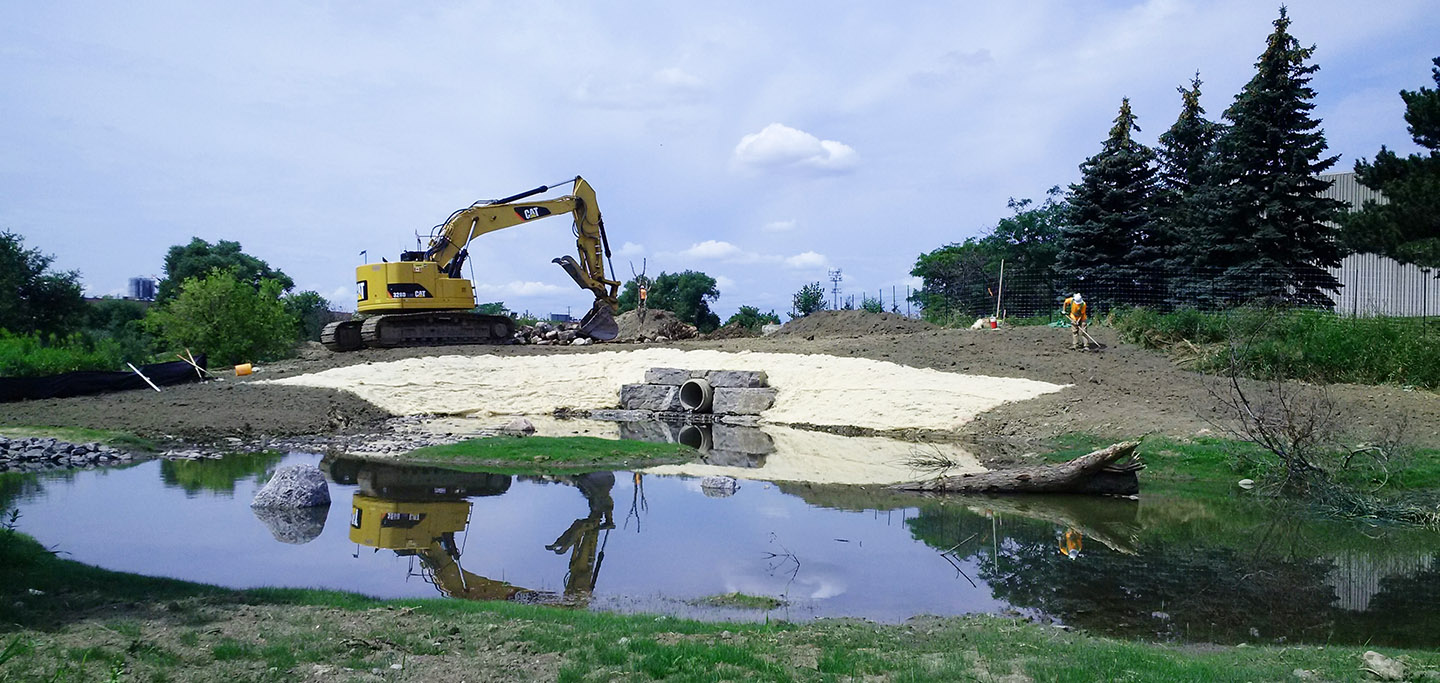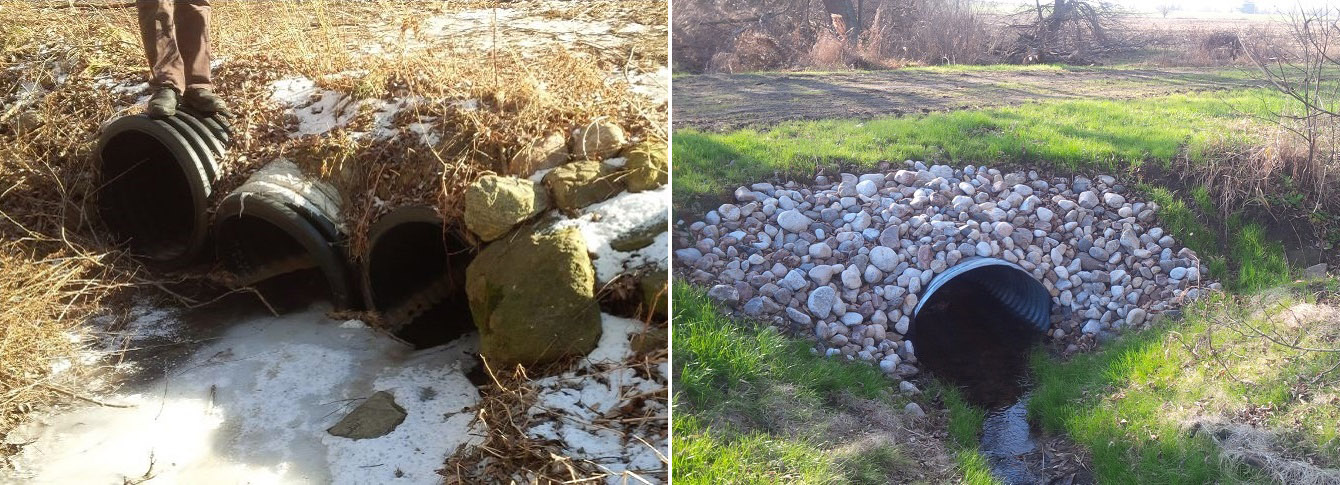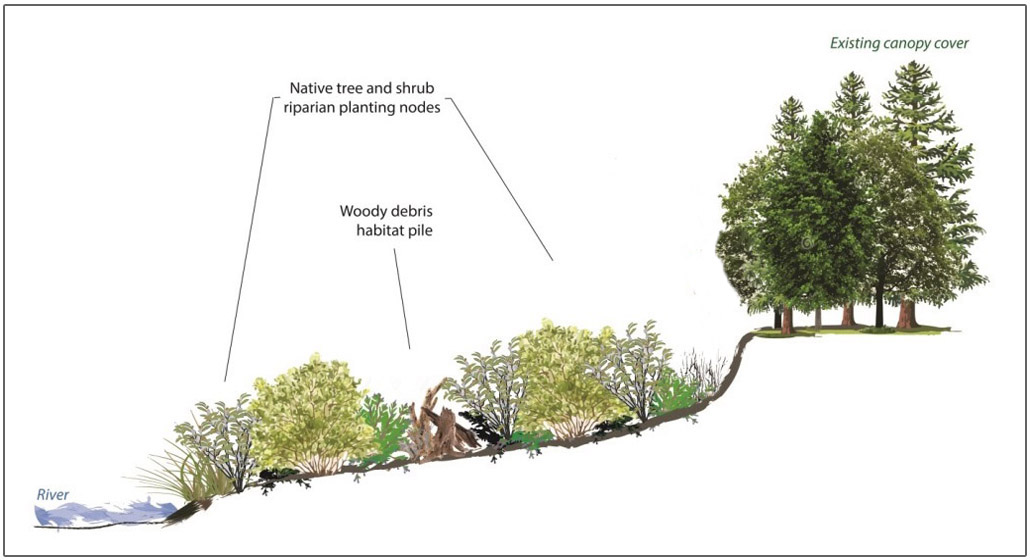WHY RESTORE STREAMS?
Over the past several decades, streams in the Greater Toronto Area (GTA) have frequently been straightened, their surfaces hardened with concrete or other materials, and their natural features (such as meanders, riffles, pools) removed in order to increase the efficiency with which water is moved off the landscape.
Urban development and intensive agriculture also put added pressures on our aquatic systems by increasing surface water runoff, erosion and sedimentation within watercourses. The resulting contamination and nutrient loading have a significant effect on water and habitat quality.

The benefits of stream restoration include:
- Improved water quality
- Stabilized stream banks
- Enhanced natural corridors that aid fish and wildlife movement
- Increased riparian and in-stream habitat
- Improved passive and active recreation opportunities
Ultimately, all streams within TRCA’s jurisdiction drain into Lake Ontario. The completion of stream restoration projects in the headwaters, as well as along the lower reaches of the watershed, can have a direct influence on the water quality and habitat along the waterfront.
HOW IS TRCA RESTORING STREAMS
The Stream restoration work done by Toronto and Region Conservation Authority (TRCA) involves natural channel design*, bank stabilization, riparian plantings, and barrier removal (such as culverts, weirs, dams and online ponds) to facilitate fish and wildlife movement.
On average, TRCA restores more than seven kilometers of riparian area and two kilometers of stream per year.
Riparian Planting Typical: Cross Section
* Naturalization refers to the alteration of hardened channels to a more natural state to allow efficient movement of water while restoring natural processes of sediment transport, and aquatic and riparian habitat.
TRCA STREAM RESTORATION PROJECTS
Alfred Kuehne Natural Channel Design Stream Restoration

The Alfred Kuehne Stream Restoration Project is located in the Etobicoke Creek watershed in the City of Brampton. A straightened concrete channel was replaced with natural meanders and habitat features such as riffles, pools and runs.
Riparian vegetation was planted along the creek and the flood plain was reconnected to provide flood relief to downstream areas and create wetland habitat.
Agricultural Crossing Replacement in Rouge Watershed
TRCA undertook the replacement of an agricultural crossing in a headwater stream. The original culverts were not embedded in the stream, limiting fish passage, and were undersized for the flow. The larger replacement culvert improves flow and fish passage and accommodates larger farm vehicles.
Despite their small size, headwater streams comprise the majority of stream length in most watersheds. Best management practices and restoration of these areas have a significant positive impact on overall stream health.

Annie Crescent Stream Bank Restoration Project
The Annie Crescent Stream Bank Restoration Project is located in the Duffins Creek watershed in the Town of Ajax. This project was implemented to restore the degraded riparian zone of the stream, minimize erosion and sedimentation, and improve creek shading. In addition, this project relocated a trail that was too close to the stream bank.

Contact
For more information, or to discuss your project and to arrange a site visit, please contact program staff: rcwp@trca.ca

